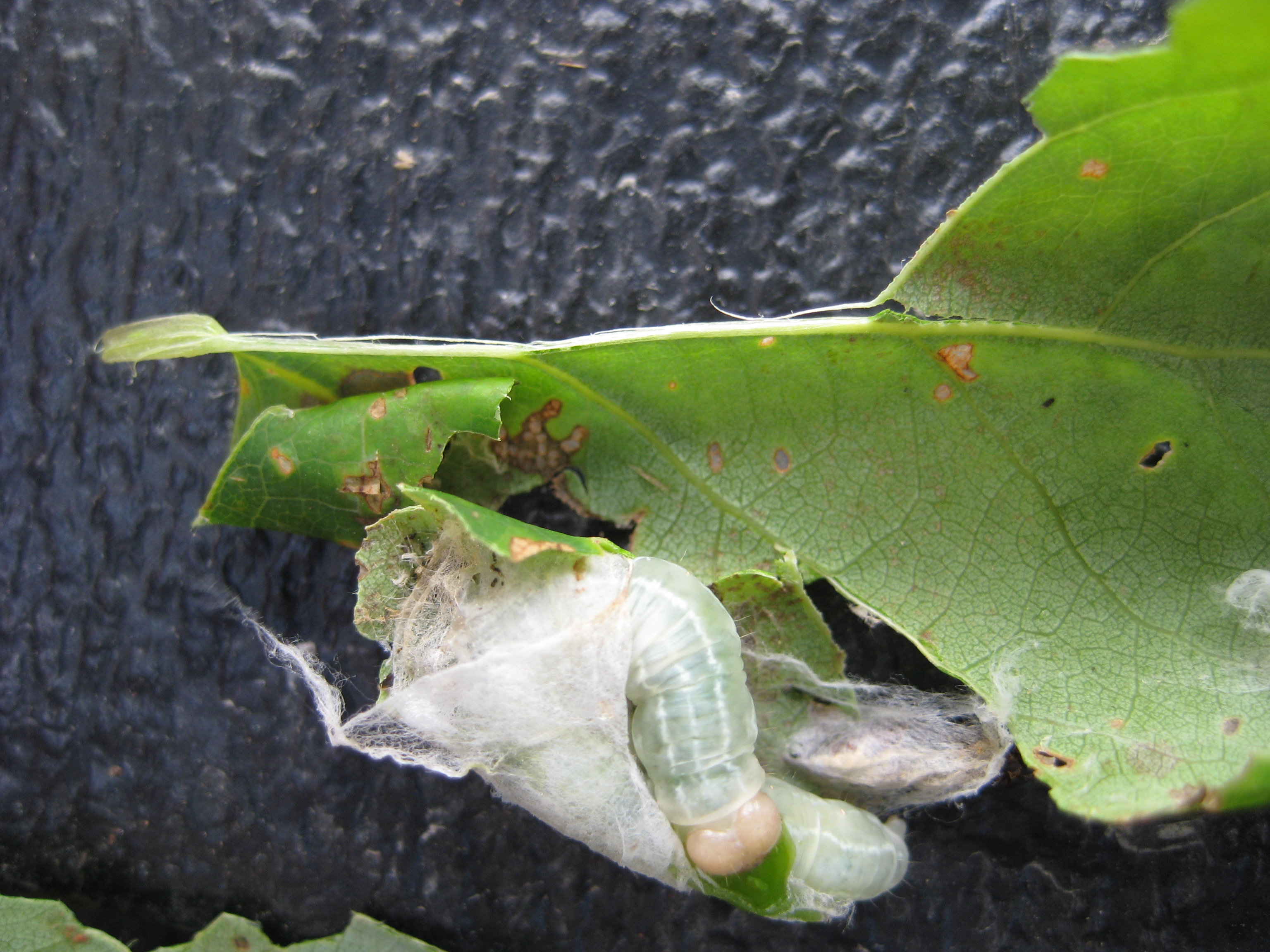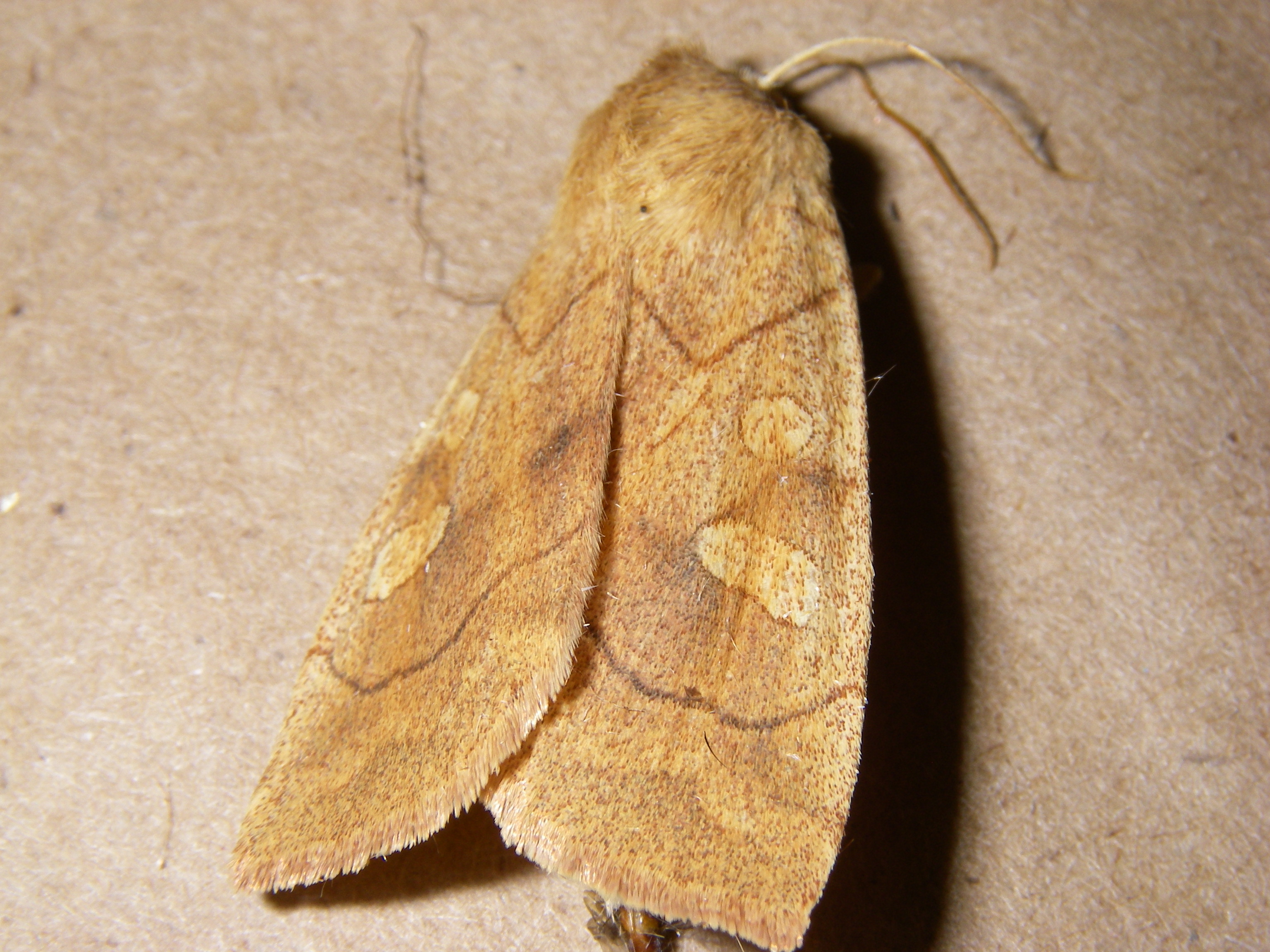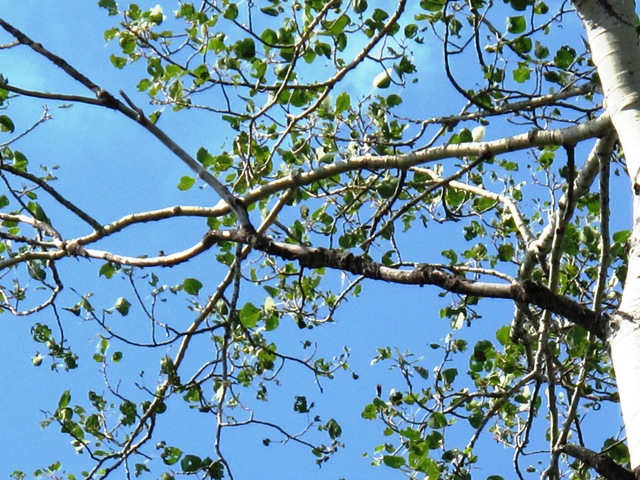Aspen twoleaf tier
Information about Aspen twoleaf tier (Enargia decolour), a forest defoliating insect found in Ontario.
Overview
- Native to North America.
- Aspen twoleaf tier is found in Canada throughout much of the natural range of aspen and cottonwood (Populus).
- Young larvae feed inside rolled leaves; as they mature, they begin feeding on the edges and outer surfaces of the leaves; semi-mature and mature larvae construct their feeding and living shelter by tying the flat surfaces of two leaves together.
- Serious outbreaks have occurred as recently as the mid-1990s.
- Large infestations have historically occurred in conjunction with several other aspen defoliators such as large aspen tortrix (Choristoneura conflictata).
Host species
Aspen twoleaf tier prefers trembling aspen and cottonwood, but will also feed on other hardwoods growing in association with these species.
Characteristics and life cycle
- Tiny larvae emerge from eggs in mid-May as the new leaves unfold.
- The translucent grey/green larvae go through six phases or “instars” usually between May and mid-July.
- At maturity, larvae are approximately 30 mm long and they drop to the ground and burrow into the soil to pupate.
- Adults emerge approximately three weeks after pupation and are a light brown.
- Adult aspen twoleaf tier have a wing-span of 30-40 mm with two thin, brown lines on each wing as well as two light brown (sometimes white spots) on each wing.
- Wings are fringed with hairs at the back end, and the head of the moth is covered with buff coloured fuzz.
- Moths can be found from late June to late September.
- Eggs are laid on or very near the ground shortly after adult emergence.


Symptoms and damage
- Infested crowns appear very thin and ragged with a number of leaves being completely consumed.
- Many leaves are tied together on their flat surfaces by aspen twoleaf tier larvae.

Control measures
No specific control measures are recommended since damage from the species is relatively minor. Outbreaks are normally short-lived as a large number of parasites can cause the collapse of the infestation.
Updated: May 17, 2021
Published: July 18, 2014